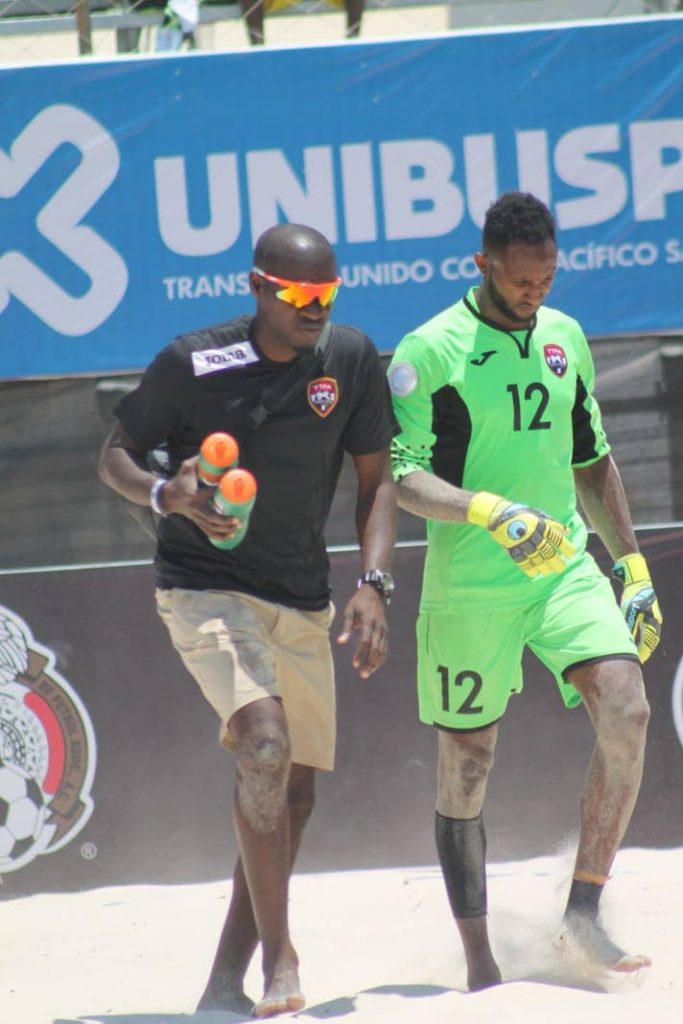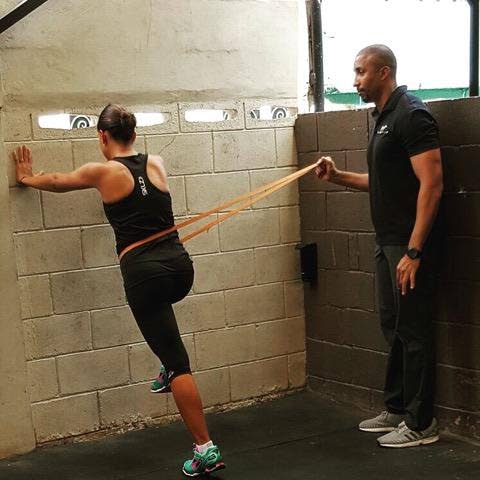Athletes incorporate sports science for smooth return

ARE athletes ready for sports to resume? Has the downtime affected their ability to return to the field, the court or the water with immediate success? Or would fatigue and injuries escalate to the point where fans, desperate for live sports, remain frustrated?
TT and international sports came to a halt in mid-March as the covid19 pandemic started to impact every corner of the world.
Here, several sports stopped including cricket, track and field, tennis and other sports that enjoy busy periods during the dry season. Regionally, several Carifta Games were cancelled including track and field and swimming which dashed the dream of youngsters who were keen on representing their country.
Globally, all football leagues including the English Premier League (EPL), the Spanish La Liga, Italian Serie A and the German Bundesliga were stopped with the latter recently resuming at closed venues.
As the NBA regular season was in the closing stages that league was also put on hold. Currently, fans would have been glued to the TV watching the playoffs.
Newsday spoke to local personnel who are instrumental in ensuring that the transition from no sports to full competitive action is a smooth one.
Dr Jason Pilgrim, an athletic trainer at Sports Medic TT, is one person committed to the task of getting athletes back on course.
The mission of Sports Medic TT is to provide every client with the highest quality of physiotherapy and sports medicine health care available in TT.
Pilgrim has worked with the Hero Caribbean Premier League team Guyana Amazon Warriors, TT Red Force, the TT Beach Soccer team, local track and field athletes and netballers among others.
Pilgrim said the covid19 pandemic allowed people to rest their bodies. “I found that the covid19 offered us a chance to actually allow the body to reset because of the amount of competition that everyone is involved in these days. For example, back in the day you had a football season and you had a cricket season, but now both sports are played basically all year.”
Transition must be gradual
Pilgrim asked to suggest how a cricketer should progress from little or no exercise to competitive sports in a space of two months, said, “Basically, the first two weeks you looking at just getting back out there and getting moving. This is where your programme is going to be strongly influenced by flexibility, core strength and general cardiovascular fitness training. You could use callisthenics, you could use basic body weight during this period, just get yourself moving because you have time.”
An athlete can then progress to weights and test their cardiovascular fitness by using a yoyo test. A yoyo test is where someone runs between markers placed approximately 20 metres apart.
Progression must be gradual, therefore the athlete will not have to exert too much energy to complete the yoyo test.

Results will be examined to design the cardiovascular training. While this is happening, coaches are consulted to maintain the skills of the athlete.
In the third to fourth week, an athlete’s skill will be included in the programme which would not include a full training session. For example, a bowler will do light bowling work.
As the weeks go by, Pilgrim said it would take a collaborative effort in getting an athlete back onto the field.
“This is in consultation with your coach. When we talking about the skill aspect we have to talk to the coaches. The sports science team as a whole has to communicate, the strength and conditioning guy has to communicate with me because I will be more looking at injury prevention and getting the person ready to move onto the strength and conditioning portion of the training. The strength and conditioning will look at getting you ready for performance and the coach will be looking at the skill aspect.”
Athletes will continue to progress as they gradually get fitter. In the last two weeks, an athlete should be 80 to 95 per cent ready before doing sport-specific activity to progress to their maximum.
Gregory Seale is a strength and conditioning coach who runs Movement Mechanics.
Movement Mechanics is an organisation that aims to support the everyday working individual, elite level athletes and complete sports teams in their rehabilitation, recovery and performance needs.
Seale has worked with the West Indies A team, West Indies Under-19 fast bowler Jayden Seales, volleyballer Kiune Fletcher and junior tennis players Luca Shamsi and Kale Dalla Costa.
Seale said week by week an athlete can increase the volume of work and in the early stage of returning to action, the rest periods must be longer.
In team sports especially, Seale said there is a lot of acceleration, deceleration and change of direction. Seale said during the pandemic these movements may not have been included in a workout or an exercise session, therefore people will be prone to injury if their transition from no sport to a heavy volume of sport is too sudden.

Denielle Jack, a physical therapist who works alongside Dr Pilgrim at Sports Medic TT, has been helping athletes recover from injuries during covid19.
“Where I work we have our injured players on an exercise programme at home. We do Zoom sessions with the ones who had injuries from before and preparing them to go back out into training.”
Jack said an athlete’s race schedule should be examined, which would help plan their road to competitive action. Jack said with the Olympics postponed until 2021 because of covid19, athletes have time to prepare.
“They have to look at whatever competition they going into (and) when it is because we know that Olympics is not scheduled until next year, so persons who starting to prepare for Olympics would have time to plan a proper training programme with their coach. It is heavily dependent on the coach as well and what they are training for specifically.”
A collaborative effort required
Seale stressed the importance that a collaborative effort must take place between all parties to help athletes perform at a high level.
“This is the kind of information we need to get out there for the coaches especially, because obviously, coaches want (players) to come (out) there and go 100 (per cent). What I have been seeing happening in Zoom meetings and sessions (that) they are having is they are focusing on a lot of muscular fatigue work and muscular conditioning, but they are leaving out the tendon conditioning like the skipping, jumping, changing direction.”
Pilgrim also encouraged athletes to get support in getting back on the field saying, “You going to talk to different sports scientists and different professionals in the sports science spectrum and they can guide you and they can help you with different criteria that you have to achieve to progress from stage to stage and we are talking about athletic trainers, athletic therapists, physiotherapists, strength and conditioning specialist. These are some of the professionals that could help to guide the athlete from one stage to the other, but it is a gentle progression. If you go back into your sport too fast or you progress too quickly you will get hurt.”
Jack, who recently helped TT Olympic sprinter Kyle Greaux recover from a leg injury, also spoke about the importance of collaboration in getting an athlete back into competition within the next few months.
“If you looking at something short term like that you do run the risk of getting injuries if you push yourself too hard within a short space of time. I think a proper support system would be good in terms of you getting at least a check-up by your physio and have the physio relate your deficit or whatever problems you are having with your coach as well. It has to be co-ordinated because you put yourself at risk of getting injuries by pushing yourself too hard or going (back) out too fast.”
Jack said aerobics is one way of increasing your level of fitness during the covid19 downtime and recommends consulting dietitians to prevent overeating and to maintain a healthy diet.
Are athletes ready or would injuries increase?
Dr Pilgrim said local athletes are doing a lot of personal work during the pandemic and fans would be delighted with the standard of play when sports resume.
“I think people will be really surprised when everything starts back. I think our guys and girls are ready, we are in for some good performances because they are hungry and a lot of them have been putting in the work.”
Globally, Dr Pilgrim says professional athletes are ready to resume sports because of how serious they take their craft.
“I think professional athletes are ready for sports to resume. When you think of those big-name clubs you are talking about the German League, you are looking at the EPL, even at the NBA and looking at athletes like LeBron James and the kind of investment that they invest in themselves, in their body, in their physical readiness. This is a job just like anything else. It is entertainment for the spectators, but it is a job (for athletes).”
Seale said despite the volume of training an athlete does at home during the pandemic, the body would be at risk of injury when sports resume.
“Even the guys who are training while they were home, they have to be concerned about getting back into sports because of the high risk of placing high volumes early on. Obviously they would not be participating in all their sport movements being at home (and) being restricted.”
Seale said TT athletes must take a cautious approach. “I think any athlete should have in their mind that they are not ready and the reason I say that is because we are not in the sporting environment that you would need to be training in. I have said to cricketers, I have said to footballers don’t expect to come back out and be ready and raring to go. You are going to lose some fitness. The way to get your fitness is to play the sport, that is where you get your fitness for sport.”


Comments
"Athletes incorporate sports science for smooth return"